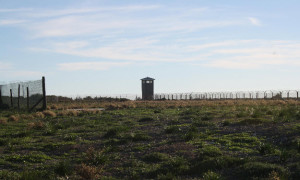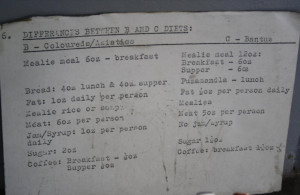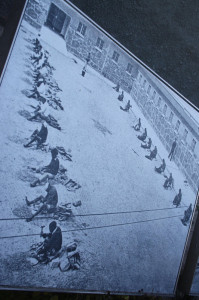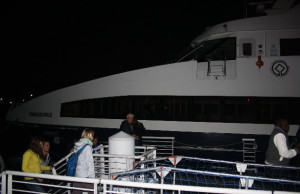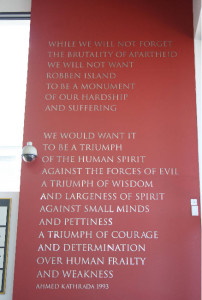Tag Archive
activity architecture art artist building Canada children city CostSaver downtown drive i-95 entertainment Europe event exhibit family festival Florida food fun historic History landmark local Museum music Nature New Zealand Ontario roadtrip sculpture Seattle show sights sightseeing tour tourist Trafalgar travel travelblogger view Washington Washington State water world
New Zealand: Auckland Domain – Auckland War Museum
In the stately columned Auckland War Museum, you can discover the world’s largest collection of Maori and Polynesian artifacts. Sitting impressively in the center is a large ornately carved Hotunui meetinghouse from 1878 and a Waka (war canoe), Te Toki-a-Tapiri from 1836. They’re heart and soul of the museum, yet there’s lots more. 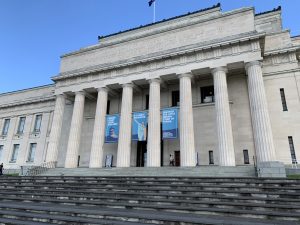
US: Mystic, CT – Spiritual Recharging at Winter Solstice Celebration thru Yoga and a Gong Bath
Winter Solstice is a good time to feed your inner light with clarity that will prepare you for the New Year. It is an astronomical phenomenon marking the day with the shortest period of daylight and the longest night of the year.
Winter Solstice Celebration allows you to experience both the power of Baptiste Yoga with Elizabeth Johnstone and also the Gongs with sound healing artist Stephanie Marisca of In Divine Harmony. In this workshop learn to release tension through the powerful principles of Baptiste yoga. Allowing the heart to open the healing sounds of gong tones, sound relaxation will gently restore harmony to your body, mind, and spirit.
Bring whatever you need to be comfortable laying on the floor for the Gong Bath. Suggested to bring a change of clothes and a blanket. Cost: $35 In Advance/ $40 Day of
Location: Mystic Yoga Shala, 80 Stonington Road #2B, Mystic, CT 06355
Date: Sat, Dec 16
Time: 4 – 6 pm
Tel: 860-536-0237
mysticyogashala.com
For Regional Accommodations, Restaurants & Attractions: ctvisit.com/mystic
thisismystic.com
US: Miami, FL – Arts and Culture Festival in Little Havana every Friday
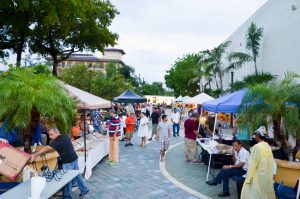 Miami, FL Exit 1B: Little Havana is a true reflection of Hispanic culture. As you approach the heart of the neighborhood at SW 8th Street—known as Calle Ocho by the locals; the geographical, historical and emotional heart of the Miami Cuban exile community, you may feel you’ve been transported to another time and place. Go there for authentic Cuban fare, a strong cafecito, a good Cuban cigar, Latin festivals or a fierce game of dominoes. From salsa-dancing and art exhibits, to a historic movie theater, concerts, Little Havana uncovers a thriving arts and culture scene with a distinctly Cuban flair.
Miami, FL Exit 1B: Little Havana is a true reflection of Hispanic culture. As you approach the heart of the neighborhood at SW 8th Street—known as Calle Ocho by the locals; the geographical, historical and emotional heart of the Miami Cuban exile community, you may feel you’ve been transported to another time and place. Go there for authentic Cuban fare, a strong cafecito, a good Cuban cigar, Latin festivals or a fierce game of dominoes. From salsa-dancing and art exhibits, to a historic movie theater, concerts, Little Havana uncovers a thriving arts and culture scene with a distinctly Cuban flair.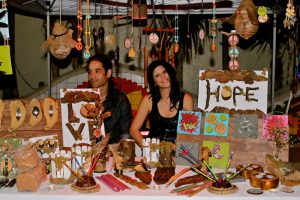
Experience Little Havana by partaking in the Cuban culture at Viernes Culturales (Cultural Fridays), Little Havana’s popular vibrant art and culture festival, taking place on the last Friday of every month, from 7 to 11 pm on SW 8th Street (Calle Ocho) between 13th and 17th Avenues. It promises to be a fun-filled event for the whole family.
Enjoy live music, dancing under the stars, discover works by local artists and artisans in and around iconic Domino Plaza on SW 8th Street and SW 15th Avenue, contemporary and historic artworks at the many fine art galleries, domino games, cigar rollers, local arts and crafts, all while taking in the flavor and ethnic diversity that Little Havana has to offer.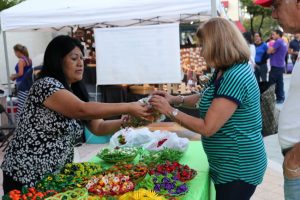
Get the sense of this tight knit community by taking advantage of the Free Little Havana Walking Tour. Dr. Paul George has developed 12 different tours of the surrounding neighborhoods and this historic walking tour experience brings a unique and different audience from all parts of South Florida. Meet in front of the Tower Theater (1508 SW 8th St.) @ 7 PM, Free, no reservations required.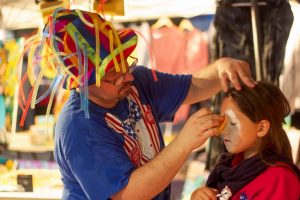
Free Trolley Service : The City of Miami takes you for free on the Miami Trolley leaving from the Mary Brickell Village and the Brickell Metrorail/Metromover Station to the heart of the Viernes Culturales festival every 15 minutes, starting at 6:30 pm.
Location: Along Southwest 8th Street from 13th to 17th avenues, Miami, FL 33135
Date: Fri, June 30 2017 (Later 2017 Dates: 7/28, 8/25, 9/29, 10/27, 11/24, 12/29)
Hours: 7 – 11 pm
Tel: 305-643-5500
viernesculturales.org/mainvc/
For Regional Accommodations, Restaurants & Attractions: miamiandbeaches.com
US: Eulonia, GA – Buffalo Steaks Grilled to Perfection at Clay’s Sapelo Station
If you are looking for fresh local seafood near Coastal Georgia, head to Clay’s Sapelo Station, where the locals eat. Though this place is small in size they say its big in service and taste. Stop in the heart of historic McIntosh County and enjoy dinner in charming, rustic coastal ambiance.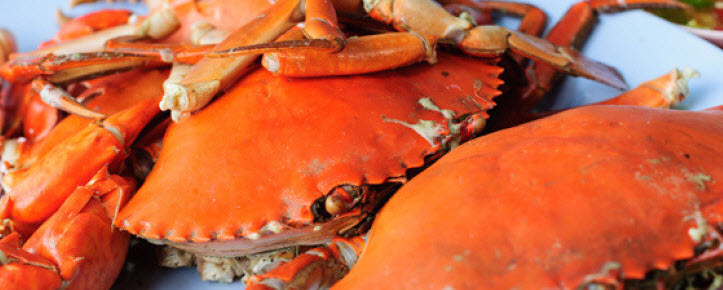
Your experience starts with the owner greeting you at the door. Treat your taste buds to the local seafood, including sweet Georgia shrimp, scallops, Sapelo Clams, oysters and a variety of fish. Or you can devour steam fresh crabs, freshly caught and steamed to order. The celebrated McIntosh County Buffalo Steaks are grilled to perfection, taking the South’s flavor and the North’s flair: Treat yourself to a tender buffalo steak and you’ll see why this is a house favorite.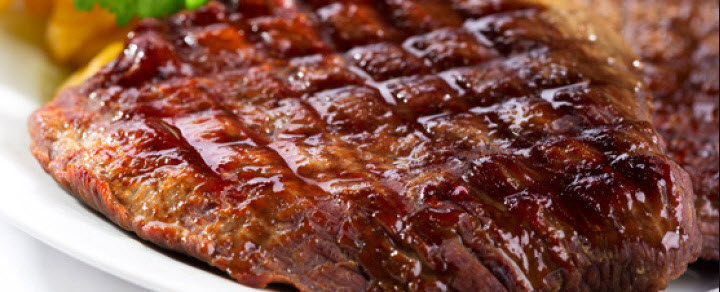
Standouts are Boom Boom Shrimp, Pecan Crusted Fish, Shrimp and Grit Cake, Crab Stew, Fish Tacos and the LCB (low country boil). Eat in the dining room, the bar area or one of the porches. Often you can enjoy live music and that’s when the place gets packed with lots of dancing – and fun. Why not take a break from the road and savor their authentic warm Southern hospitality.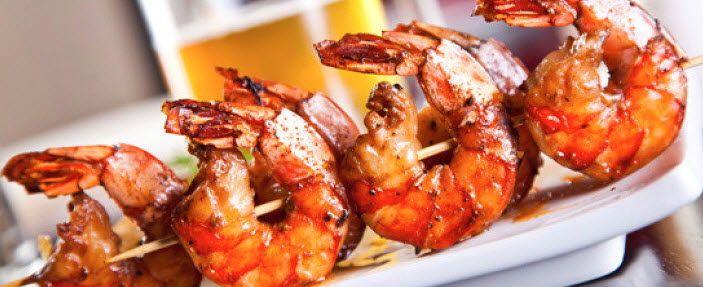
Location: Clay’s Sapelo Station – 15600 US Highway 17, Townsend, Georgia 31331
Hours: Wed – Sat 5pm – 10pm,
Sun 12pm – 10pm
Tel: 912-832-2013
clayssapelostation.com
For Regional Accommodations, Restaurants & Attractions: visitdarien.com
mcintoshcountyga.com
US: Norwalk, CT – Growing Up in Korea – Heart and Seoul
Last chance to see Heart and Seoul: Growing Up in Korea is a new, cultural exhibit in which five modern-day Korean kids will open their hearts and invite you to take an intimate look into their lives through their diverse interests, customs and ambitions. The traveling exhibition will be in town only until end December at Stepping Stones Museum for Children.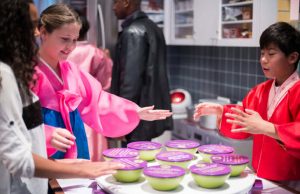
The exhibit, both fun and educational, will use traditional folktales as well as current day personal stories told by Korean children to engage visitors in learning about time-honored cultural values and life in South Korea’s highly urbanized and technologically-advanced country.
Children and visitors will be able to explore gallery areas that recreate the settings that characterize the lives of typical South Korean children in Seoul, such as an apartment, classroom, taekwondo studio, and K-pop stage. Throughout the exhibit, these spaces will be embedded with traditional folktales and games to show how values like respect for parents and elders; the importance of scholarship; loyalty to family, friends and community; and hospitality are still an integral facet of 21st century Korean life. 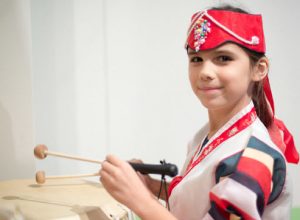
Hands-on experiences include: an animation studio where visitors can try their hand at stop-motion animation. (The popular television series The Simpsons and Family Guy were created in Korean studios, as was the film Avatar.) Musically inclined kids will take the stage at K-Pop Stars Studio, where they can get on camera and “perform” with popular K-Pop singers. There’s a Taekwondo studio, where kids can practice their moves and learn this martial art based on 2,000-year-old ancient techniques.The exhibit also includes a plaza, a restaurant, an apartment, a classroom and a Hanok guest house.
Location: Stepping Stones Museum for Children, Mathews Park,
303 West Ave, Norwalk, CT 06850 |
Dates: til the end of Dec.
Hours: Mon – Sun, 10 – 5 pm
Tel: 203-899-0606
steppingstonesmuseum.org
For Regional Accommodations, Restaurants & Attractions: visitfairfieldcountyct.com
US: Providence, RI – 3 Days of Fun: National and Local Improv
Providence, RI Exit 21: Three days of amazing national & local improv talent at The 13th Annual Providence Improv Festival taking place in the heart of downtown Providence on September 22-24, 2016. 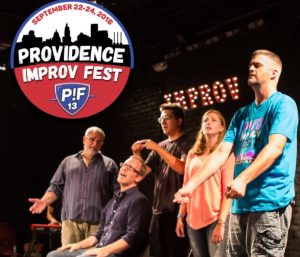
This year’s Fest will feature top improv comedy troupes from throughout the country including Susan Messing and Rachael Mason as “The Boys”. The FEST remains dedicated to showcasing a broad spectrum of theater artists who excel at creating scenes, characters, and situations in the moment offering shows by top performers in the local, regional, and national improv comedy scenes.
Be a part of the festival, rub elbows with some incredible performers, partake in the workshops, after-parties and other fun events at their downtown theatre spaces. Experience some of the world-class food, art, and entertainment that Providence can offer within an intimate and picturesque cityscape.
- Location: AS220
- 95 Empire Street, Providence, RI
- 115 Empire Street, Providence, RI
- Providence, RI 02903Dates: September 22 – 24, 2016
Times: Various check schedule
Tel: 401-241-9556
providenceimprovfest.com
For Regional Accommodations, Restaurants & Attractions: goprovidence.com
Photo credit – David Rickerby
South Africa: Visiting Robben Island, UNESCO World Heritage Site
By Adele Shapiro – March 2012.
As a child I used to visit Robben Island with my grandmother. Her son, my uncle, was a warder in the prison services there. The name “Robben”, despite sounding very English – is in fact the Dutch for “Seal” – and the name derives from the extensive seal colony that was found on the Island by the first Dutch settlers.
We would go to the Cape Town docks and from there, take a boat ride to the island, where we would spend the day with family. I was vaguely aware that there were bad people on the island, and that it was a prison…. but little did I know then of the role it was to play in South Africa’s later history. Years passed and now as an ad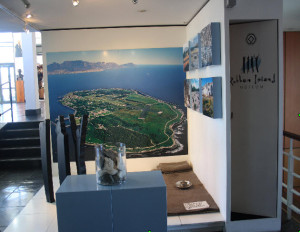 ult, I found myself revisiting the place where “the bad people” were kept, only now I realized that some were not so bad after all.
ult, I found myself revisiting the place where “the bad people” were kept, only now I realized that some were not so bad after all.
I bought a ticket for the tour some days before the trip, (advisable, as they fill up quickly) and took time out to examine the display at the Nelson Mandela Gateway at the V&A Waterfront in Cape Town.
There were many photographs of the political dissidents, the calls for boycotts, the anti-apartheid marches and there was also a prison cell that had been reconstructed for the purposes of the exhibit. I strongly recommend a visit to this exhibit before going to the island as it helps to contextualize the experience.
The trip began, as in times of old, with a boat ride from Cape Town docks, but this time instead of my uncle meeting us, we had a pleasant tour guide who told us jokes on our bus trip, whilst pointing out various sights on the island. Our bus was parked under a sign that said: “Welcome. We serve with pride.” I wondered if that sign had been there when Robben Island had been a prison as it was so sharply incongruous to the environment. I hoped not.
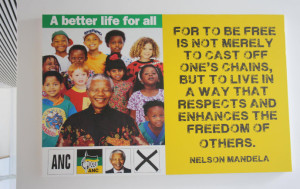 Robben Island has had a long history. First as a lighthouse to warn ships of the VOC, the Dutch East India Company (Verenigde Oostindische Compagnie), of the rocks that surround the island. But since the end of the 17th century, Robben Island has been used for the isolation of (mainly) political prisoners. The island was also used at various times as an animal quarantine station, a home for slaves, a leper colony, a hospital for the mentally ill and as a prison for French Vichy prisoners of war.
Robben Island has had a long history. First as a lighthouse to warn ships of the VOC, the Dutch East India Company (Verenigde Oostindische Compagnie), of the rocks that surround the island. But since the end of the 17th century, Robben Island has been used for the isolation of (mainly) political prisoners. The island was also used at various times as an animal quarantine station, a home for slaves, a leper colony, a hospital for the mentally ill and as a prison for French Vichy prisoners of war.
First we saw the Leper Graveyard and then house where Robert Sobukwe (Founder of the Pan Africanist Congress) had been kept separate from the other political dissidents.
It seems that Robert Sobukwe had special status in the prison. He was kept in solitary confinement at all times, but allowed certain privileges including access to books, being permitted to study, being permitted to wear civilian clothes, and being permitted bread. His children were allowed to visit him and they had their own bedroom in his “house”. Robert Sobukwe was convicted of incitement for demonstrating against and defying the Pass Laws, and in particular, for his connection to the PAC demonstration (although he was not present) which became known as the Sharpeville Massacre.
The notorious Pass Laws required black people to carry a pass book at all times when outside their compounds or designated areas, and were designed to limit severely the movements of the non-white population. This legislation was one of the dominant features of the country’s apartheid system.
Sobukwe was sentenced to three years in prison. After serving his sentence, he was moved to Robben Island for internment, as a new law called the General Law Amendment Act had been passed, which permitted his imprisonment to be renewed annually at the discretion of the Minister of Justice. This procedure became known as the “Sobukwe clause” and Robert Sobukwe was the only person whose imprisonment was extended under this clause. Imagine how special one has to be in order for parliament to pass a law just for you!
We also learned from our tour guide that the American politician and Pastor, Andrew Young, had fostered Sobukwe’s children in the USA, while Sobukwe had been in prison.
Our tour continued to the lime quarry where the political prisoners had worked. At the entrance to the quarry we saw a small cairn, and learned its history. In February 1995, (the landmark change of government was in 1994), about one thousand former political prisoners gathered again on Robben Island, but this time as free men, and to mark the occasion, each one placed a small stone from the quarry in a pile, making a small memorial to their years of hardship and struggle.
As we continued on our bus ride, we were shown a church, a hospital, a school and a mosque, and realized that far beyond our expectations, the island had supported a whole community. We duly arrived at the prison and tumbled out of the bus for our tour of “the real thing”. We were excited and filled with high spirits and I wondered for a moment where my heart would have been had I not been a tourist.
Inside we found grey walls. It was cool at midday; it was clear that at midnight it would be very cold. The communal cells were large and each had a bathroom attached.
Here we met our prison tour guide, Derrick Basson, a former political prisoner who served time on Robben Island for sabotage.
Derrick was very patient, humble and remarkably, not bitter. He answered all the insensitive questions calmly and without anger. In addition he explained the grading of the prisoners by race and also the diets that varied due to the racial classification of each prisoner. One of the curious facts he told us was that black prisoners were not given bread. As they were Africans their “natural” food was considered to be maize meal. The mixed race prisoners were allowed bread as they were considered to be more western or European and less African. The black Africans were also not allowed jam or syrup. I suppose you do not need jam if you have no bread.
Then I remembered that Robert Sobukwe, in spite of being black, was allowed to have bread, and it struck me that this must have been because he had been a university professor, and since this is a very “European” and non-tribal job, maybe he was considered eligible to receive bread.
Derrick further explained how prisoners slept on mats on the floor and how 5 blankets had not been enough to keep them warm at night. I suddenly remembered an interview with a former Alcatraz inmate who spoke of the extreme cold and of how prisoners had learned to sleep with only their elbows and knees touching the floor, hands locked behind the head. I became very grateful for my duvet.
We were told that in the beginning the political prisoners had been kept with the ordinary criminals, but later on, they were, thankfully, given their own “wing” and kept together. They came to call this place “The University” as they learned many things from each other and many of them also obtained degrees while in prison.
Derrick then took us to a yard where the prisoners had chopped rocks and turned them into stones, day after day in the sun. They were told that these rocks were used for roads built on the island, but no one seemed to know if this was true or not.
We were then taken to Nelson Mandela’s cell. Mandela was a militant anti-apartheid activist, as well as the co-founder and leader of the armed wing of the African National Congress (ANC), Umkhonto we Sizwe or “Spear of the Nation”. He was arrested in 1962 and convicted of sabotage, (amongst other charges), after he admitted to manufacturing explosives and acts of public violence, and was sentenced to life imprisonment. Mandela served 27 years in prison, 18 of these on Robben Island. After his release, he served as President of South Africa from 1994 to 1999.
My very first impression was of how small the cell was. No, not small, tiny. And then I thought that at least he could stand up and lie down in it, but not much more than that. At least it was larger than the dreadful box that I had heard was used in China. But there was no toilet. Just a metal bucket with a lid. At least a lid. And no tap, so no water. And if you are thirsty during the night, what should you do? And of course there was no electrical socket and no radio nor TV. And all I could think of was 27 years. TWENTY SEVEN YEARS! There was no door handle on the inside. The door was only operational from the outside, not unlike a cage. I remembered that Nelson Mandela had once remarked that the hardest and most traumatic experience he endured whilst on Robben Island for all those years was that he never ever saw, or even heard, a child. Can you imagine that? Now he insists on being photographed with children, whenever possible.
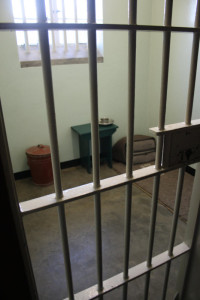 And then it was all over. We walked out to the yard, Derrick took us to the exit, and we said our goodbyes.I felt an odd mixture of elation and depression. Very happy that I had been to a UNESCO World Heritage Site of such importance, happier still that it was no longer a prison, and most happy that I was leaving. Yet also depressed and ashamed because of the suffering this place represented.
And then it was all over. We walked out to the yard, Derrick took us to the exit, and we said our goodbyes.I felt an odd mixture of elation and depression. Very happy that I had been to a UNESCO World Heritage Site of such importance, happier still that it was no longer a prison, and most happy that I was leaving. Yet also depressed and ashamed because of the suffering this place represented.
Duly subdued, we gratefully returned to our boat to ponder our feelings of inspiration and shock, enjoy the beautiful sunset cruise back to Cape Town, and watch a school of dolphins at play in the sea.
Remember when planning a visit to Robben Island, that the tours don’t always run on time. There was no snack bar on the boat. Our boat was 1 hour late in leaving Cape Town harbour and then we were rushed through our tour, which was a pity as there was too little time for questions.
A suggestion would be to make no appointments after the visit as the timing can vary, and also, take a snack pack. A sun hat and sun block are also good ideas.
Ferries depart (supposedly) at 9am, 11am, 1pm and 3pm, weather permitting, from Nelson Mandela Gateway, at the V&A Waterfront in Cape Town. Tickets costs are R230 for adults and R120 for children (U/18). Telephone: +27 (0)21 413 4200
Fax: +27 (0)21 419 1057
